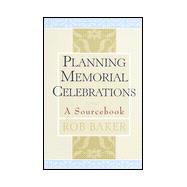
| Foreword: Time and Remembrance | p. ix |
| First Steps | p. 1 |
| Memorials at the Time of Death | |
| The Standard Solution: Using the Services of Professionals | p. 9 |
| First Alternative: Cremation | p. 24 |
| Second Alternative: Private Service and Home Burial | p. 28 |
| Third Alternative: Donation of the Body for Medical Purposes | p. 32 |
| A Brief Background of American Funeral Customs | p. 35 |
| Historical and Non-Western Funeral Traditions | p. 40 |
| The Question of Cost | p. 51 |
| Delayed Memorials | |
| Timing, Place, and Participation | p. 59 |
| Special Circumstances | p. 64 |
| Spreading the Word: Not Leaving Anyone Uninvited | p. 68 |
| Finding Music for the Service | p. 72 |
| The Right Words: Selecting Poetry and Prose | p. 77 |
| Writing Eulogies | p. 84 |
| Choosing Spiritual or Scriptural References | p. 93 |
| Balancing the Segments of the Service | p. 102 |
| Setting the Scene: Flowers, Photos, Personal Mementos | p. 106 |
| Post-Celebration Activities: Food, Drink, Camaraderie | p. 111 |
| Lasting Memorials | p. 115 |
| Epilogue: Closure: Continuing the Process | p. 119 |
| Two Sample Memorial Services | p. 122 |
| Memorial Societies in the United States | p. 135 |
| Bibliography | p. 146 |
| Discography | p. 156 |
| Endnotes | p. 179 |
| Table of Contents provided by Syndetics. All Rights Reserved. |
The New copy of this book will include any supplemental materials advertised. Please check the title of the book to determine if it should include any access cards, study guides, lab manuals, CDs, etc.
The Used, Rental and eBook copies of this book are not guaranteed to include any supplemental materials. Typically, only the book itself is included. This is true even if the title states it includes any access cards, study guides, lab manuals, CDs, etc.
Excerpted from Planning Memorial Celebrations: A Sourcebook by Rob Baker
All rights reserved by the original copyright owners. Excerpts are provided for display purposes only and may not be reproduced, reprinted or distributed without the written permission of the publisher.